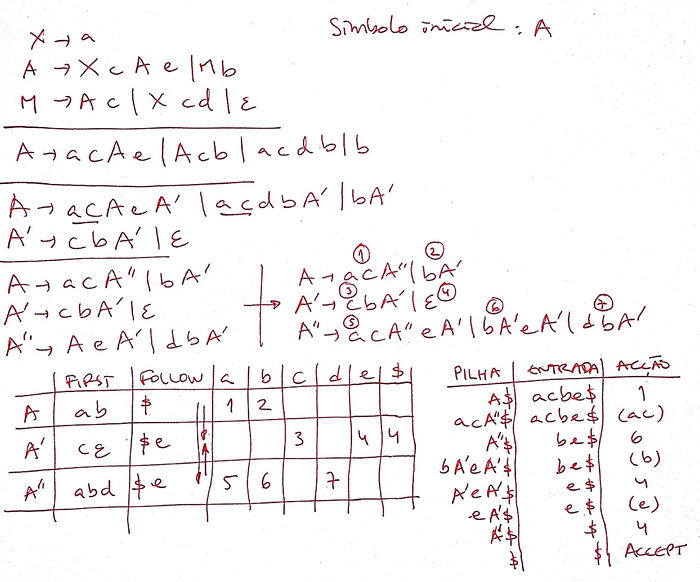Top-Down Parsing/Exercise 7: Difference between revisions
From Wiki**3
< Top-Down Parsing
No edit summary |
No edit summary |
||
| Line 1: | Line 1: | ||
{{TOCright}} | {{TOCright}} | ||
= Problem = | == Problem == | ||
Consider the following grammar, where '''<tt>A</tt>''' is the initial symbol and '''<tt>{a,b,c,d,e}</tt>''' is the set of terminal symbols: | Consider the following grammar, where '''<tt>A</tt>''' is the initial symbol and '''<tt>{a,b,c,d,e}</tt>''' is the set of terminal symbols: | ||
| Line 12: | Line 12: | ||
# Show the analysis table (stack, input, and actions) for the parsing process of the '''<tt>acbe</tt>''' input sequence. | # Show the analysis table (stack, input, and actions) for the parsing process of the '''<tt>acbe</tt>''' input sequence. | ||
= Solution = | == Solution == | ||
[[Image:CompilersTopDownParsingExercise7.jpg|700px]] | [[Image:CompilersTopDownParsingExercise7.jpg|700px]] | ||
<headertabs/> | <!-- <headertabs/> --> | ||
[[category:Teaching]] | [[category:Teaching]] | ||
[[category:Compilers]] | [[category:Compilers]] | ||
Revision as of 13:21, 27 March 2015
Problem
Consider the following grammar, where A is the initial symbol and {a,b,c,d,e} is the set of terminal symbols:
X -> a A -> X c A e | M b M -> A c | X c d | (eps)
- Examine the grammar and rewrite it so that an LL(1) predictive parser can be built for the corresponding language.
- Compute the FIRST and FOLLOW sets for all non-terminal symbols in the new grammar and build the parse table.
- Show the analysis table (stack, input, and actions) for the parsing process of the acbe input sequence.
